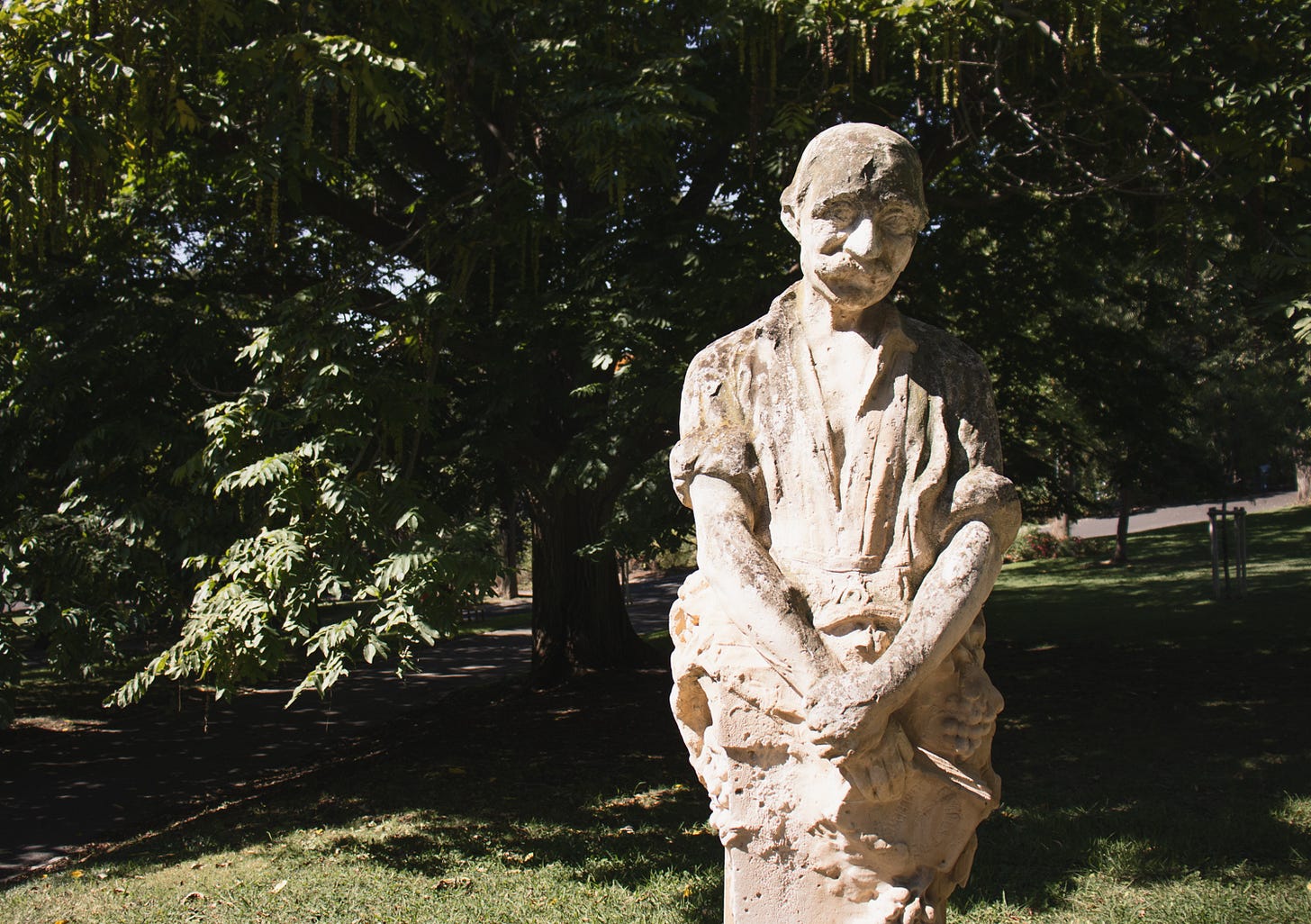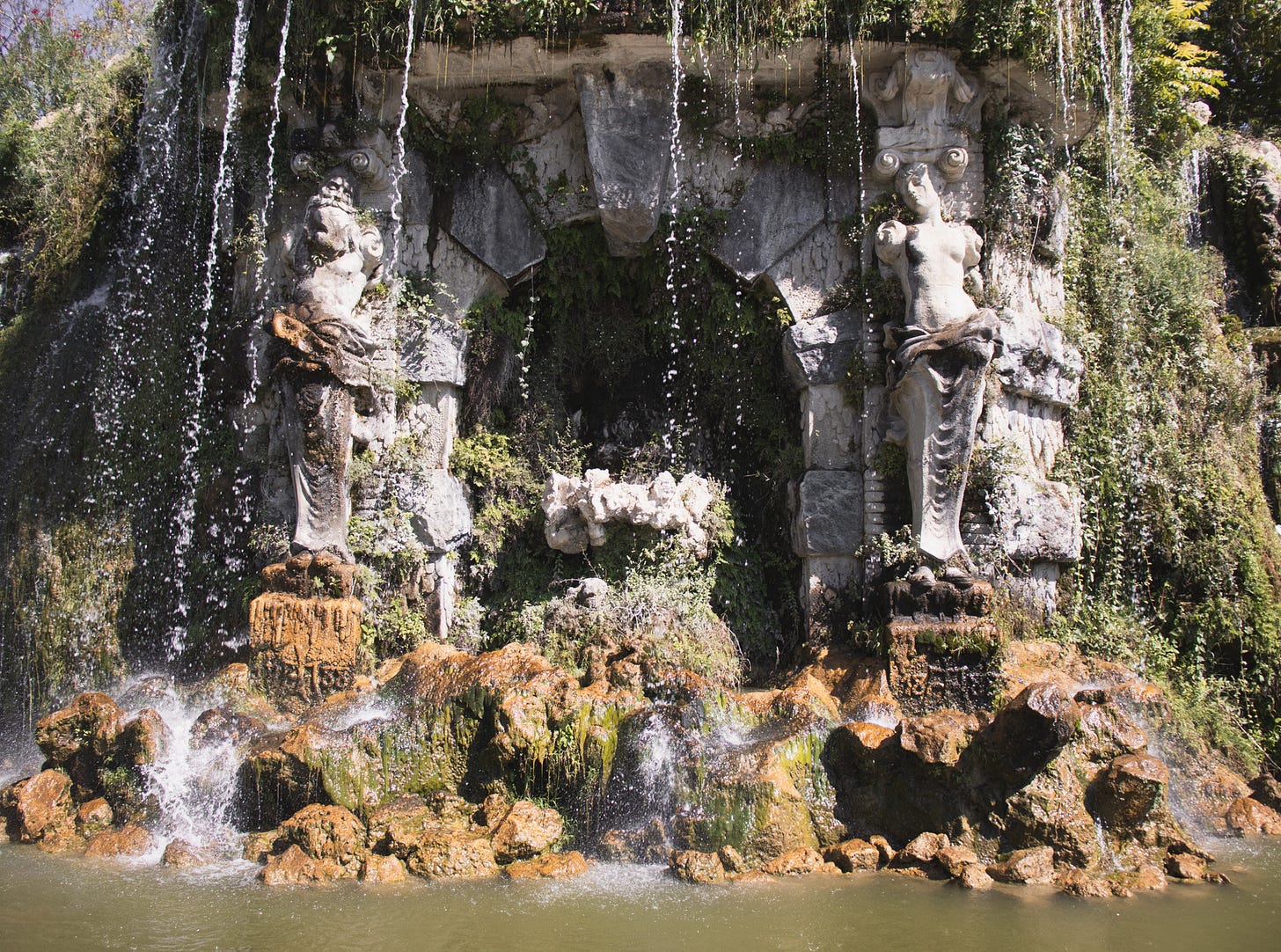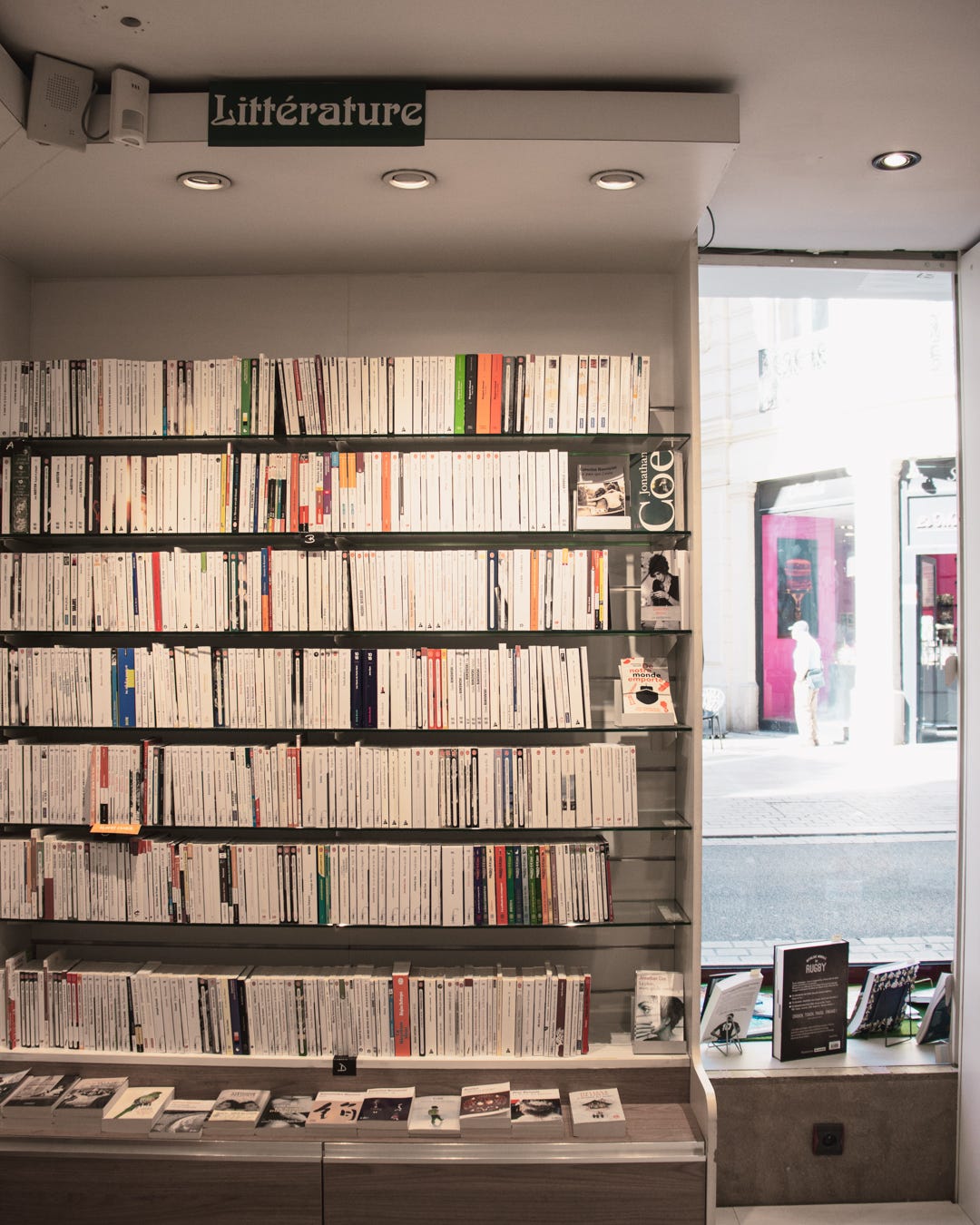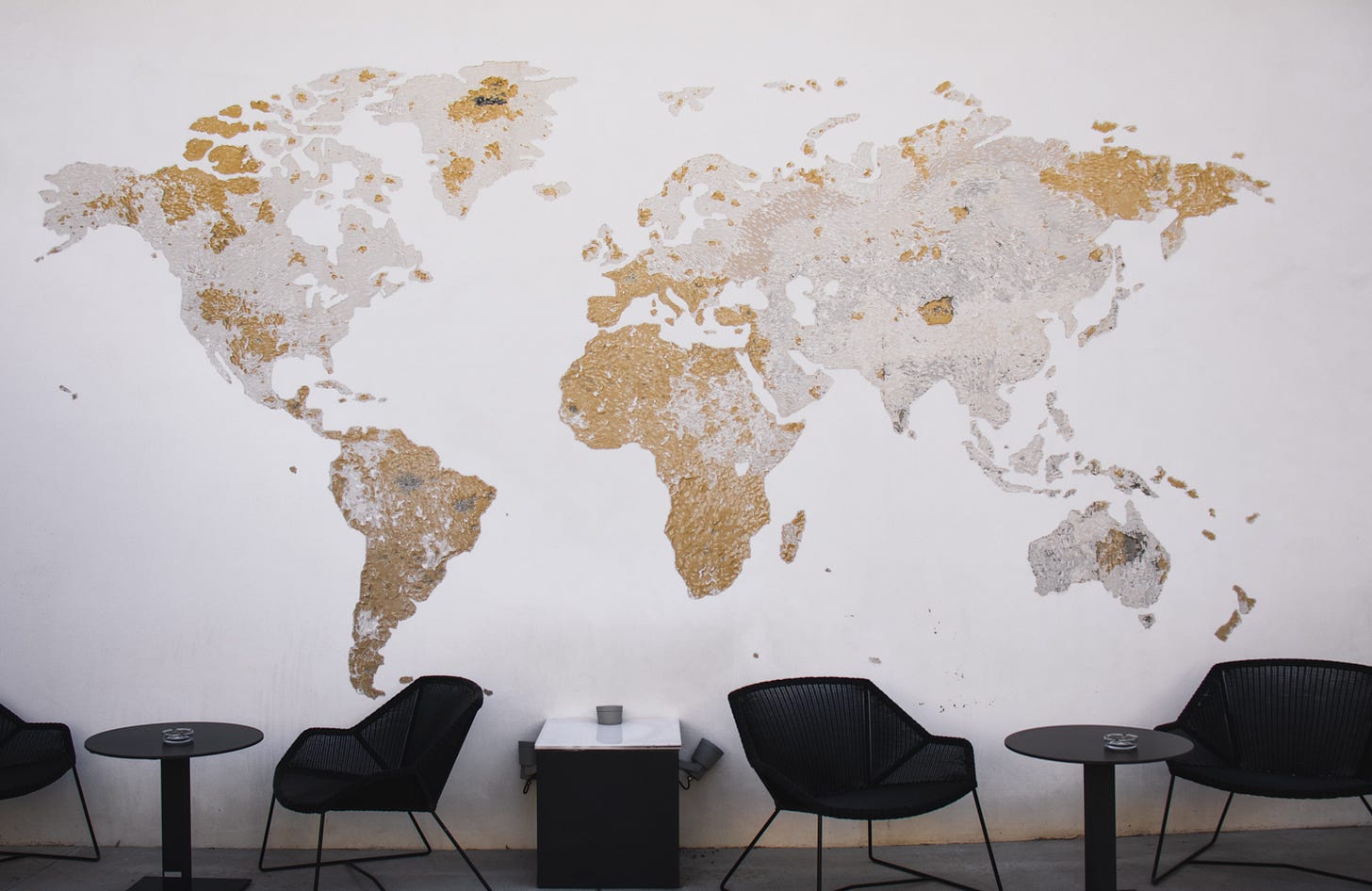I sit on a plush pink chair in a macaron shop in Béziers, France. It’s the last day of a three day weekend, we’re leaving tomorrow morning. I’m here with my fiance, on a September getaway, elongating the short Swedish summer. Back home, leaves are falling and the temperature is dropping and the people are stocking up on knitted scarves and candle sticks.
It’s my first time in France. Travel wasn’t really a part of my childhood, and there are many countries in Europe I still haven’t visited. I’m smitten.
The macaron shop is vibrant and modern, a little tacky. It clashes brilliantly with most of Béziers. But they have one thing in common: it’s romantic.
A writer struck by French flair
Béziers is old. According to the Wikipedia page I read before the trip, it’s the oldest still inhabited town in France. It has a large cathedral, an old bridge, sculptures and street upon street of old houses.
In the city centre there is a park, the Plateau des Poetes. Among the open grass areas and curved walking paths stand sculptures of old poets and writers. And in the middle, a fountain so intricate and over the top it would make a Swedish art critic wrinkle their nose. There are even carps swimming in the water.
Here, romance and art takes up space. It’s visible. It’s unapologetic.
At breakfast that day, I flipped through the local French newspapers. It amazed me how much I could understand – every third word or so has an equivalent either in English or Swedish (or both). The influence of French culture is apparent right there, in words about politics and protests.
There are many stories of Swedish writers and artists of the 1700-1800s travelling to France, living there for months or years. Strindberg, one of Sweden’s old famous authors lived there periodically. The famous artist couple Carl and Karin Larsson fell in love while living in France. Influences were brought back home with their works.
I understand it. Walking around in Béziers, I notice little details that wouldn’t exist in Sweden. The curve of a spiral staircase leading up to a bridge, that in Sweden would have been concrete with 90 degree angles. I see it in beautiful street lamps and magnificent sculptures. But also in crumbling walls and cracked stairs.
Sweden is a practical country. Yes, we like good design, but we’re pragmatic. Efficient. Good at finding clever solutions. Our houses can’t have cracked walls, we’d freeze in winter. We don’t value the old and beautiful like the French do. Many old houses in central Stockholm were torn down in an attempt to modernise.
In a country that historically had a quite poor, small population, art and writing could never have been be as influential as in France. Never been allowed to take up as much time and space, when resources were scarce and winter was a fight for survival.
As a writer, I understand the escape from the dark Swedish winters and pragmatism for the French flair and romanticism. I get what Strindberg and the Larssons were seeking in France.
A writer returning home
I leave the macaron shop and walk to the bookstore across the street, Librarie Independante. I browse the French books, and there they are again, the differences. Poetry has its own shelf, books about art and culture close to the entrance. Mystery and thrillers tucked away in the back. It’s all backwards from what I’m used to.
The next day, we leave for Sweden. On the plane ride home, I wistfully wonder what it would be like to be a French writer rather than a Swedish one.
We have such a small language. The Swedish Writer’s Union estimate that only around one hundred authors in Sweden can live solely off of their book royalties. I would guess they’re all translated to other languages.
I think: as a writer, would I fare better with the French romance? With the flair and attention to beauty and the artistic?
Maybe.
But then the plane is descending and we break through that thick layer of autumn clouds and fly in over forests and lakes. And I see our quiet romance, the one of nature. We hit ground and walk through the airport and I see the attention to simple, clean design. I see the calm, cosy down-to-earthness.
I see a closeness to the everyday, to what feels like the everyday for me. I see something understated that feels real and true and honest. And I know that this is what has shaped me as a writer. For better or worse, this is how I want to write.
Like the Swedish creatives that have come before me, it’s easy to dream of other cultures. With grander artistic history, with larger languages. But as I step out in the nip of the autumn air, I realise that I’m quite happy being a Swedish writer after all.










Beautiful! I live in Quebec, Canada, the only French-speaking province in our country. Here, like in Sweden, writers struggle, because the portion of our country's population that can actually read French is so small. I understand your questionning.
Loved this! A contemplation of identity and gratitude.